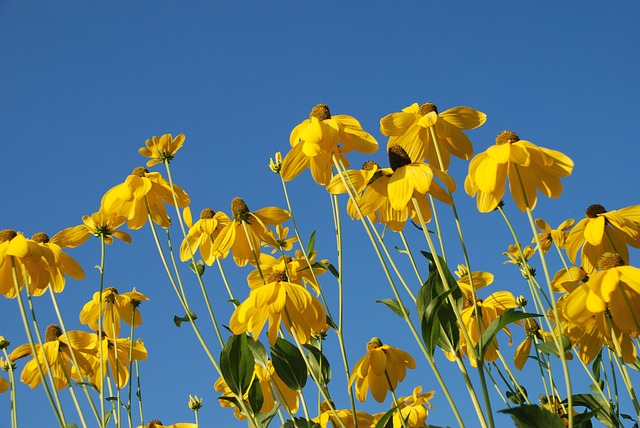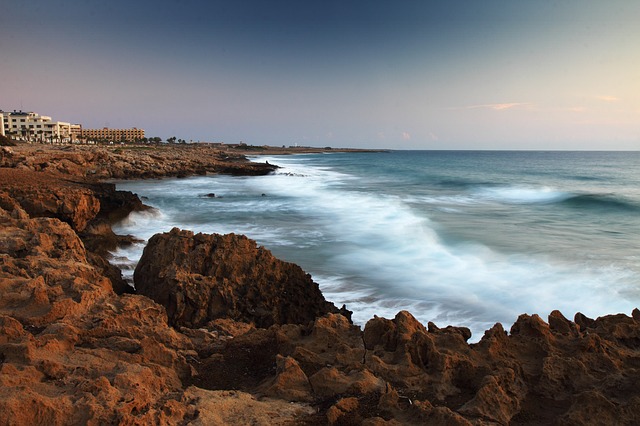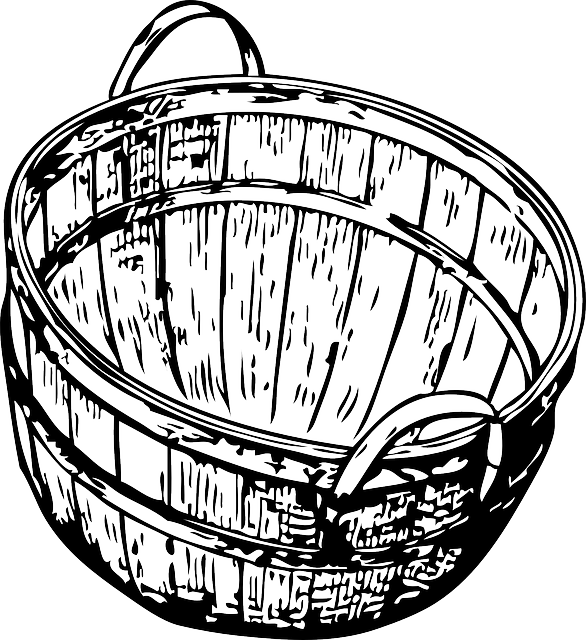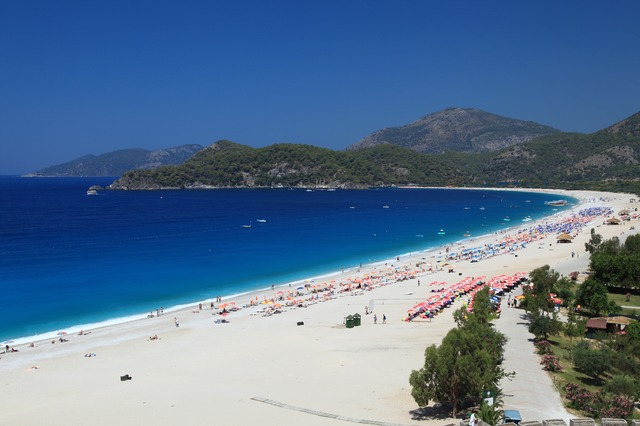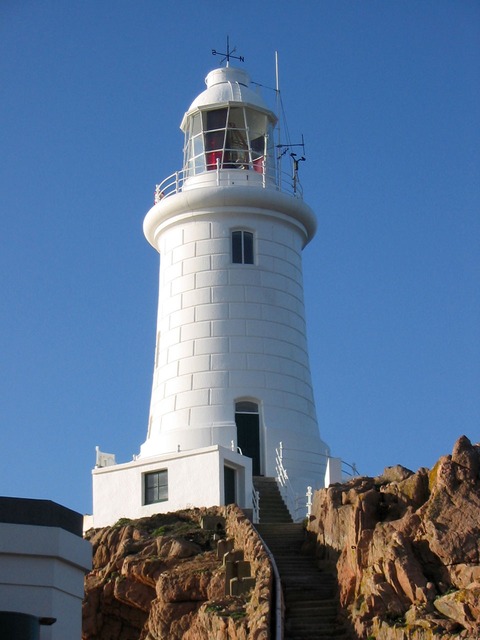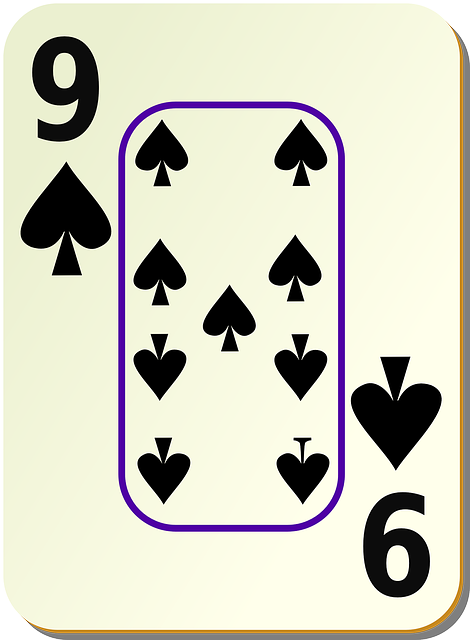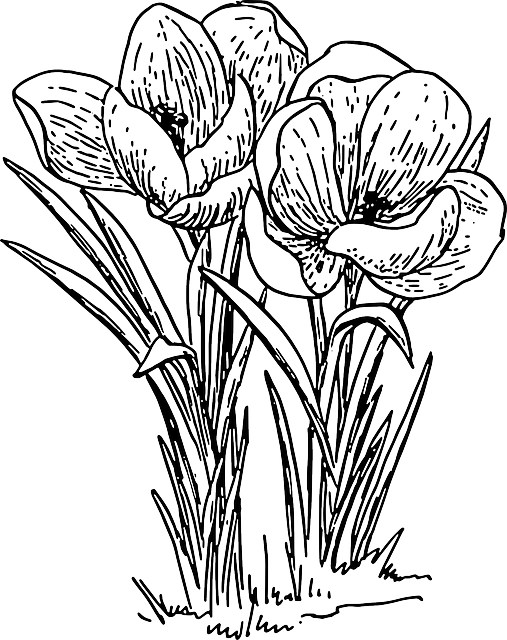معبد سومنات
| معبد سومنات | |
|---|---|
|
القابلة الأمامية لمعبد سومنات الحالي
| |
| الدين | |
| الارتباط | الهندوسية |
| المقاطعة | گير سومنات |
| الإله | سومنات (شيڤا) |
| الأعياد | مها شيڤاراتري |
| الهيئة الحاكمة | وقف شري سومنات، گجرات |
| المسقط | |
| المسقط | Veraval |
| الولاية | گجرات |
| البلد | الهند |
المسقط في گجرات
| |
| الإحداثيات الجغرافية | Coordinates: |
| العمارة | |
| النوع المعماري | عمارة المعبد الهندوسي |
| اكتمل | 1951 (المنشأ الحالي) |
| المسقط الإلكتروني | |
| somnath.org | |
معبد سومنات Somnath temple يقع في Prabhas Patan بالقرب من ڤراڤال في Saurashtra على الساحل الغربي لولاية گجرات، يُعتقد أنه الأول بين الإثني عشر معبد جيوتيرلينگا للإله شيڤا. هومسقط حج وسياحة هام في گجرات. أعيد بناؤه عدة مرات في الماضي بعد تدمير متكرر على أيدي الغزاة والحكام المسلمين، المعبد الحالي أعيد بناؤه على طراز چاولوكيا لعمارة المعابد الهندوسية واكتمل في مايو1951. إعادة الإنشاء بدأت بأمر من وزير داخلية الهند Vallabhbhai Patel واكتمل بعد وفاته.
أصل الاسم
المعبد يُعتبر مقدساً بسبب الكثير من الأساطير المرتبطة به. سومنات تعني "سيد السوما"، كنية للإله شيڤا.
يُعهد معبد سومنات بأنه "المعبد الخالد"، بسبب صدور كتاب ك. م. مونشي بهذا العنوان and his narration of the temple's destruction and reconstruction many times in history.
جيوتيرلينگا
According to tradition, the Shivalinga in Somnath is one of the 12 jyotirlingas in India, where Shiva is believed to have appeared as a fiery column of light. The jyotirlingas are taken as the supreme, undivided reality out of which Shiva partly appears.
Each of the 12 jyotirlinga sites take the name of a different manifestation of Shiva. At all these sites, the primary image is a lingam representing the beginning-less and endless stambha (pillar), symbolizing the infinite nature of Shiva. In addition to the one at Somnath, the others are at Varanasi, Rameswaram, Dwarka, etc.
التاريخ
The site of Somnath has been a pilgrimage site from ancient times on account of being a Triveni sangam (the confluence of three rivers: Kapila, Hiran and Sarasvati). Soma, the Moon god, is believed to have lost his lustre due to a curse, and he bathed in the Sarasvati River at this site to regain it. The result is the waxing and waning of the moon, no doubt an allusion to the waxing and waning of the tides at this seashore location. The name of the town Prabhas, meaning lustre, as well as the alternative names Someshvar and Somnath ("The lord of the moon" or "the moon god") arise from this tradition.
تاريخ المعبد
Accoring to popular tradition documented by J. Gordon Melton, the first Shiva temple at Somnath is believed to have been built at some unknown time in the past. The second temple is said to have been built at the same site by the "Yadava kings" of Vallabhi around 649 CE. In 725 CE, Al-Junayd, the Arab governor of Sindh is said to have destroyed the second temple as part of his invasions of Gujarat and Rajasthan. The Gurjara-Pratihara king Nagabhata II is said to have constructed the third temple in 815 CE, a large structure of red sandstone.
However, there is historical record of an attack on Somnath by Al-Junayd. Nagabhata II is known to have visited tirthas في Saurashtra, including Someshvara (the Lord of the Moon), which may or may not be a reference to a Shiva temple because the town itself was known by that name. The Chaulukya (Solanki) king Mularaja possibly built the first temple at the site sometime before 997 CE, even though some historians believe that he may have renovated a smaller earlier temple.
في 1024, during the reign of Bhima I, the prominent Turkic muslim ruler محمود الغزنوي raided Gujarat, plundering the Somnath temple and breaking its jyotirlinga despite pleas by Brahmins not to break it. He took away a booty of 20 million dinars. Historians expect the damage to the temple by Mahmud to have been minimal because there are no records of pilgrimages to the temple till 1038, for 12 years no pilgrim due to damages However, powerful legends with intricate detail developed in the Turko-Persian literature regarding Mahmud's raid, which "electrified" the Muslim world according to scholar Meenakshi Jain. They later boasted that Mahmud had killed 50,000 devotees. The devotees had tried to defend the temple from being vandalised and looted.
The temple at the time of Mahmud's attack appears to have been a wooden structure, which is said to have decayed in time (kalajirnam). Kumarapala a Jain king, (r. 1143–72) rebuilt it in "excellent stone and studded it with jewels," according to an inscription in 1169.
الغزة حسب ابن خلدون
كان للهند صنم يسمّونة سومنات، وهوأعظم أصنامهم في حصن حصين على ساحل البحر بحيث تلتقفه ألقاء. والصنم مبني في بيته على ستة وخمسين سارية من الساج المصفح بالرصاص، وهومن حجر طوله خمسة أذرع: منها ذراعان غائصان في البناء، وليس له صورة مشخّصة، والبيت مظلم يضيء بقناديل الجوهر الفائق، وعنده سلسلة مضى بجرس وزنها مائة منّ تحرّك بأدوار معلومة من الليل فيقوم عباد البرهمّيين لعبادتهم بصوت الجرس. وعنده خزانة فيها عدد كثير من الأصنام مضىاً وفضةً، عليها ستور معلقة بالجوهر منسوجة بالمضى تزيد قيمتها على عشرين ألف ألف دينار. وكانوا يحجونّ إلى هذا الصنم ليلة خسوف القمر فتجتمع إليه عوالم لا تحصى. وتزعم الهنود حتى الأرواح بعد المفارقة تجتمع إليه فيبثّها فيمن شاء بناء على التناسخ والمدّ والجزر عندهم، هوعبادة البحر. وكانوا يقّربون إليه جميع نفيس، وذخائرهم كلّها عنده. ويعطون سدنته الأموال الجليلة. وكان له أوقاف تزيد على عشرة آلاف ضيعة.
وكان نهرهم المسمّى كنك الذي يزعمون أنّ مصبه في الجنّة، ويلقون فيه عظام الموتى من كبرائهم، وبينه وبين سومنات مائتا فرسخ. وكان يحمل من مائه جميع يوم لغسل هذا الصنم. وكان يقوم عند الصنم من عبّاد البرهمّيين ألف رجل في جميع يوم للعبادة، وثلاثمائة لحلق رؤوس الزوّار ولحاهم، وثلاثمائة رجل وخمسمائة امرأة يغّنون ويرقصون، ولهم على ذلك الجرايات الوافرة. وكان حدثّا فتح محمود بن سبكتكين من الهند فتحاً أوكسر صنماً يقول أهل الهند: إذا سومنات ساخط عليهم، ولوكان راضياً عنهم لأهلك محموداً دونه. فاعتزم محمود بن سبكتكين إلى غزوه، وتكذيب نادىويهم في شأنه. فسار من غزنة في شبعان سنة ست عشرة وأربعمائة في ثلاثين ألف فارس سوى المتطّوعة، وبتر القفر إلى الملتان، وتزوّد له من القوت والماء قدر الكفاية، وزيادة عشرين ألف حمل.
وخرج من المفازة إلى حصون مشحونة بالرجال قد غوّروا آبارهم مخافة الحصار، فقذف الله الرعب في قلوبهم، وفتحها وقتل سكانها وكسر أصنامها، واستقى منها الماء. وسار إلى أنهلوارا، وأجفل عنها صاحبها بهيم، وسار إلى بعض حصونه. وملك السلطان المدينة، ومرّ إلى سومنات، ووجد في طريقه حصوناً كثيرة فيها أصنام وضعوها كالنقباء والخدمة لسومنات ففتحها، وخرّبها وكسر الأصنام. ثم سار في قفر معطش، واجتمع من سكانه عشرون ألفا لدفاعه فقاتلهم سراياه، وغنموا أموالهم وانتهوا إلى دبلواه على مرحلتين من سومنات فاستولى عليها، وقتل رجالها، ووصل إلى سومنات منتصف ذي القعدة فوجد أهلها مختفين في أسوارهم، وأعربوا بحدثة الإسلام فوقها فاشتد القتال، حتى حجز بينهم الليل.
ثم أصبحوا إلى القتال، وأثخنوا في الهنود. وكانوا يدخلون إلى الصنم فيعنّفونه ويبكون ويتضرّعون إليه، ويرجعون إلى القتال. ثم انهزموا بعد حتى أفناهم القتل. وركب فلّهم السفن فأدركوا، وانقسموا بين النهب والقتل والغرق، وقتل منهم نحومن خمسين ألفاً. واستولى السلطان على جميع ما في البيت. ثم بلغه أنّ بهيم صاحب انهلوارن اعتصم بقلعة له تسمّى كندهة في جزيرة على أربعين فرسخاً من البّر فرام خوض البحر إليها، ثم عاد عنها، وقصد المنصورة، وكان صاحبها ارتد عن الإسلام ففارقها، وتسّرب في غياض هناك فأحاطت عساكر السلطان بها، وتتبعوهم بالقتل فأفنوهم. ثم سار إلى بهاطية فدان أهلها بالطاعة، ورجع إلى غزنة في صفر سنة سبع عشرة.
التدمير الثاني
المعبد دَمـّره مرة أخرى جيش سلطنة دلهي في 1299 م. During its 1299 invasion of Gujarat, Alauddin Khalji's army, led by Ulugh Khan, defeated the Vaghela king Karna, and sacked the Somnath temple. Legends in the later texts Kanhadade Prabandha (15th century) and Khyat (17th century) state that the Jalore ruler Kanhadadeva later recovered the Somnath idol and freed the Hindu prisoners, after an attack on the Delhi army near Jalore. However, other sources state that the idol was taken to Delhi, where it was thrown to be trampled under the feet of Muslims. These sources include the contemporary and near-contemporary texts including Amir Khusrau's Khazainul-Futuh, Ziauddin Barani's Tarikh-i-Firuz Shahi and Jinaprabha Suri's Vividha-tirtha-kalpa. It is possible that the story of Kanhadadeva's rescue of the Somnath idol is a fabrication by the later writers. Alternatively, it is possible that the Khalji army was taking multiple idols to Delhi, and Kanhadadeva's army retrieved one of them.
The temple was rebuilt by Mahipala I, the Chudasama king of Saurashtra in 1308 and the lingam was installed by his son Khengara sometime between 1331 and 1351. As late as the 14th century, Gujarati Muslim pilgrims were noted by Amir Khusrow to stop at that temple to pay their respects before departing for the Hajj pilgrimage.
In 1395, the temple was destroyed for the third time by ظفر خان، the last governor of Gujarat under the سلطنة دلهي ولاحقاً founder of Gujarat Sultanate. In 1451, it was desecrated by Mahmud Begada, the Sultan of Gujarat.
By 1665, the temple, one of many, was ordered to be destroyed by Mughal emperor Aurangzeb. In 1701, he ordered the destruction of temple in such a manner that it can't be reconstructed again. So, the temple was destroyed and a mosque was built at its place in 1706.
حادثة "إعلان البوابات" خلال فترة المراثا
In 1782–83, Maratha Shinde king of Gwalior, Mahadaji Shinde, victoriously brought back three silver gates from Lahore after defeating Mahmud Shah Abdali, to Somnath. After refusal from priests of Gujarat and the then ruler Gaekwad to put them back on Somnath temple, these silver gates were placed in the temples of Ujjain. Today they can be seen in two temples of India, Mahakaleshwar Jyotirlinga and Gopal Mandir of Ujjain.
In 1842, Edward Law, 1st Earl of Ellenborough issued his Proclamation of the Gates, in which he ordered the British army in Afghanistan to return via Ghazni and bring back to India the sandalwood gates from the tomb of Mahmud of Ghazni in Ghazni, Afghanistan. These were believed to have been taken by Mahmud from Somnath. Under Ellenborough's instruction, General William Nott removed the gates in September 1842. A whole sepoy regiment, the 6th Jat Light Infantry, was detailed to carry the gates back to India in triumph. However, on arrival, they were found not to be of Gujarati or Indian design, and not of Sandalwood, but of Deodar wood (native to Ghazni) and therefore not authentic to Somnath. They were placed in the arsenal store-room of the Agra Fort where they still lie to the present day. There was a debate in the House of Commons in London in 1843 on the question of the gates of the temple and Ellenbourough's role in the affair. After much crossfire between the British Government and the opposition, all of the facts as we know them were laid out.
In the 19th century novel The Moonstone by Wilkie Collins, the diamond of the title is presumed to have been stolen from the temple at Somnath and, according to the historian Romila Thapar, reflects the interest aroused in Britain by the gates.
إعادة البناء في 1950–1951
Before independence, Veraval was part of the Junagadh State, whose ruler had acceded to Pakistan in 1947. After India refused to accept his decision, the state was made a part of India and Deputy Prime Minister Patel came to Junagadh on 12 نوفمبر 1947 to direct the stabilization of the state by the Indian Army and at the same time ordered the reconstruction of the Somnath temple.
When Patel, K. M. Munshi and other leaders of the Congress went to Mahatma Gandhi with their proposal to reconstruct the Somnath temple, Gandhi blessed the move, but suggested that the funds for the construction should be collected from the public and the temple should not be funded by the state. He expressed that he was proud to associate himself to the project of renovation of the temple. However, soon both Gandhi and Sardar Patel died and the task of reconstruction of the temple continued under Munshi, who was the Minister for Food and Civil Supplies, Government of India headed by Prime Minister Jawaharlal Nehru.
The ruins were pulled down in October 1950 and the mosque present at that site was shifted few kilometres away by using construction vehicles. In May 1951, Rajendra Prasad, the first President of the Republic of India, invited by K M Munshi, performed the installation ceremony for the temple. The President said in his address, "It is my view that the reconstruction of the Somnath Temple will be complete on that day when not only a magnificent edifice will arise on this foundation, but the mansion of India's prosperity will be really that prosperity of which the ancient temple of Somnath was a symbol." He added: "The Somnath temple signifies that the power of reconstruction is always greater than the power of destruction."
عمارة المعبد الحالي
The present temple is built in the Chaulukya style of temple architecture or "Kailash Mahameru Prasad" style and reflects the skill of the Sompura Salats, one of Gujarat's master masons. The temple's śikhara, or main spire, is 15 metres in height, and it has an 8.2-metre tall flag pole at the top.
The temple is situated at such a place that there is no land in a straight line between Somnath seashore until Antarctica, such an inscription in Sanskrit is found on the Bāṇastambha (Sanskrit: बाणस्तम्भ, lit. arrow pillar) erected on the sea-protection wall. The Bāṇastambha mentions that it stands at a point on the Indian landmass that is the first point on land in the north to the South Pole at that particular longitude.[]
معرض صور
Somnath Temple in 1957
Somnath Temple in 2012
Somnath Temple at dawn
انظر أيضاً
- Bhalka
- Conversion of non-Muslim places of worship into mosques
- Kashi Vishwanath Temple
الهامش
- ^ "Somnath darshan". Official website of Somnath Temple. Retrieved 19 December 2016.
- ^ Yagnik & Sheth 2005, pp. 39–40.
- ^ Thapar 2004, pp. 36–37.
- ^ Catherine B. Asher, Cynthia Talbot. . Sterling Publishers. p. 42.
- ^ Thapar 2004, pp. 68–69
- ^ Yagnik & Sheth 2005, p. 47-50.
- ^ Gopal, Ram (1994). . M.D. Publications Pvt. Ltd. p. 148. ISBN .
- ^ Jaffrelot, Christophe (1996). . C. Hurst & Co. Publishers. p. 84. ISBN .
- ^ Ranjan Ghosh (30 June 2012). . Berghahn Books. pp. 54–. ISBN .
- ^ Eck 1999, p. 107
- ^ See: Gwynne 2008, Section on Char Dham
- ^ Lochtefeld 2002, pp. 324–325
- ^ Harding 1998, pp. 158–158
- ^ Vivekananda Vol. 4
- ^ Venugopalam 2003, pp. 92–95.
- ^ Chaturvedi 2006, pp. 58–72.
- ^ Thapar 2004, p. 18.
- ^ Melton, J. Gordon (2014). Faiths Across Time: 5,000 Years of Religious History. ABC-CLIO. pp. 516, 547, 587. ISBN .
- ^ Dhaky & Shastri 1974, p. 32 cited in Thapar 2004, p. 23
- ^ Thapar 2004, pp. 23–24.
- ^ https://web.archive.org/web/20180922173738/http://shodhganga.inflibnet.ac.in/bitstream/10603/88808/8/chapter-v.pdf
- ^ Thapar 2004, p. 75.
- ^ Thapar 2004, Chapter 3.
- ^ Meenakshi Jain (21 March 2004). ". The Pioneer. Retrieved 2014-12-15.
- ^ Thapar 2004, pp. 68–69: But Mahmud’s legitimacy in the eyes of established Islam also derived from the constant reiteration that he was a Sunni who attacked the heretics, the Ismai‘ilis and Shi‘as in India and Persia. The boast is always that their mosques were closed or destroyed and that invariably 50,000 of them were killed. The figure becomes formulaic, a part of the rhetoric for killing, irrespective of whether they were Hindu kafirs or Muslim heretics.
- ^ Thapar 2004, p. 79.
- ^ Yagnik & Sheth 2005, p. 40.
- ^ Eaton (2000), Temple desecration in pre-modern India Frontline, p. 73, item 16 of the Table, Archived by Columbia University
- ^ Yagnik & Sheth 2005, p. 47.
- ^ Ashok Kumar Srivastava (1979). . Sahitya Sansar Prakashan. pp. 39–40. OCLC 12737199.
- ^ Kishori Saran Lal (1950). . Allahabad: The Indian Press. p. 85. OCLC 685167335.
- ^ Dasharatha Sharma (1959). . S. Chand / Motilal Banarsidass. p. 162. ISBN . OCLC 3624414.
- ^ . Prabhat Prakashan. Retrieved 1 November 2014.
- ^ Flood, Finbarr Barry (2009). . Princeton University Press. p. 43. ISBN .
- ^ Yagnik & Sheth 2005, p. 49.
- ^ Yagnik & Sheth 2005, p. 50.
- ^ Satish Chandra, Medieval India: From Sultanat to the Mughals, (Har-Anand, 2009), 278.
- ^ [https://books.google.co.in/books?id=wVr_f_gXOX4C&pg=PA148&dq=Somnath+mandir+demolished+by+aurangzeb&hl=en&sa=X&ved=0ahUKEwj71uXV3N7lAhUainAKHRmrAHcQ6AEINzAC#v=onepage&q=Somnath%20mandir%20demolished%20by%20aurangzeb&f=false Hindu Culture During and After Muslim Rule: Survival and Subsequent Challenges by Ram Gopal pg 148
- ^ [https://books.google.co.in/books?id=Q5w9qmd1UeMC&pg=PP112&dq=Somnath+mandir+demolished+by+aurangzeb&hl=en&sa=X&ved=0ahUKEwj71uXV3N7lAhUainAKHRmrAHcQ6AEIaTAJ#v=onepage&q=Somnath%20mandir%20demolished%20by%20aurangzeb&f=false Atrocitology: Humanity's 100 Deadliest Achievements by Matthew White
- ^ https://www.deshgujarat.com/2017/08/13/somnathseries-the-last-destruction-of-somnath-temple-and-gujarat-under-aurangzeb/
- ^ Amitabh Mishra (1 January 2007). . Kanishka Publishers, Distributors. p. 42. ISBN .
- ^ "Mosque and Tomb of the Emperor Sultan Mahmood of Ghuznee". British Library. Retrieved 1 November 2014.
- ^ . Outlook India Pub. 2006. p. 79.
- ^ "Battle of Kabul 1842". britishbattles.com. Retrieved 16 October 2017.
- ^ Havell, Ernest Binfield (2003). . Asian Educational Services. pp. 62–63. ISBN . Retrieved 16 October 2017.
- ^ John Clark Marshman (1867). . Longmans, Green. pp. 230–231.
- ^ George Smith (1878). . John Murray. pp. 304–310.
- ^ The United Kingdom House of Commons Debate,تسعة March 1943, on The Somnath (Prabhas Patan) Proclamation, Junagadh 1948. 584–602, 620, 630–32, 656, 674.
- ^ "The Gates of Somnauth, by Thomas Babington Macaulay, a speech in the House of Commons, March 9, 1843". Columbia University in the City of New York. Retrieved 5 August 2016.
- ^ Thapar 2004
- ^ Hindustan Times, 15 Nov, 1947
- ^ Marie Cruz Gabriel, Rediscovery of India, A silence in the city and other stories, Published by Orient Blackswan, 1996, ISBN 81-250-0828-4, ISBN 978-81-250-0828-6
- ^ Mir Jaffar Barkriwala, The Glorious Destruction of Hindoo Temples in Kathiawar and their replacement, Ul Akbari Publications, Bharuch, 1902
- ^ Peter Van der Veer, Ayodhya and Somnath, eternal shrines, contested histories, 1992
- ^ Kanaiyalal Maneklal Munshi, Indian constitutional documents, Published by Bharatiya Vidya Bhavan, 1967
- ^ "Shree Somnath Trust :: Jay Somnath". Somnath.org. Retrieved 1 November 2014.
المراجع
- Chaturvedi, B. K. (2006), Shiv Purana (First ed.), New Delhi: Diamond Pocket Books (P) Ltd, ISBN 81-7182-721-7, https://books.google.com/books?id=bchgql0em9YC&pg=PA58&dq=jyotirlinga&hl=en&sa=X&ei=tatJT_lXtIayAvm-2OoI&ved=0CEEQ6AEwAw#v=onepage&q&f=false
- Eck, Diana L. (1999), Banaras, city of light (First ed.), New York: Columbia University Press, ISBN 0-231-11447-8, https://books.google.com/books?id=J57C4d8Bv6UC&pg=PA107&dq=jyotirlinga&hl=en&sa=X&ei=uCxKT_eNKczMsQLV9vj6BA&ved=0CGEQ6AEwCA#v=onepage&q=jyotirlinga&f=false
- Gwynne, Paul (2009), World Religions in Practice: A Comparative Introduction, Oxford: Blackwell Publication, ISBN 978-1-4051-6702-4, https://books.google.com/books?id=tdsRKc_knZoC&pg=PT271&dq=jyotirlinga&hl=en&sa=X&ei=uCxKT_eNKczMsQLV9vj6BA&ved=0CGcQ6AEwCQ#v=onepage&q=jyotirlinga&f=false.
- Harding, Elizabeth U. (1998). "God, the Father". Kali: The Black Goddess of Dakshineswar. Motilal Banarsidass. pp. 156–157. ISBN .
- Lochtefeld, James G. (2002), The Illustrated Encyclopedia of Hinduism: A-M, Rosen Publishing Group, p. 122, ISBN 0-8239-3179-X, https://books.google.com/books?id=5kl0DYIjUPgC
- Venugopalam, R. (2003), Meditation: Any Time Any Where (First ed.), Delhi: B. Jain Publishers (P) Ltd., ISBN 81-8056-373-1, https://books.google.com/books?id=ZtnNw_hiA9oC&pg=PT113&dq=jyotirlinga&hl=en&sa=X&ei=p5FJT87jJsOHsgLpg_zqCA&ved=0CDsQ6AEwAg#v=onepage&q=jyotirlinga&f=false
- Vivekananda, Swami. "The Paris Congress of the History of Religions". The Complete Works of Swami Vivekananda. Vol.4.
- Thapar, Romila (2004). Somanatha: The Many Voices of a History. Penguin Books India. ISBN .
- Yagnik, Achyut; Sheth, Suchitra (2005), The Shaping of Modern Gujarat: Plurality, Hindutva, and Beyond, Penguin Books India, ISBN 978-0-14-400038-8, https://books.google.com/books?id=wmKIiAPgnF0C&pg=PA39
- Dhaky, M. A.; Shastri, H. P., eds. (1974). The Riddle of the Temple at Somanatha. Bharata Manisha.
- Henry, Cousens (1931), Somnatha and Other Mediaeval Temples in Kathiawad, India: Archaeological Survey of India, Vol XLV, Imperial Press
وصلات خارجية
| مشاع الفهم فيه ميديا متعلقة بموضوع [[commons:خطأ لوا في وحدة:WikidataIB على السطر 496: attempt to index field 'wikibase' (a nil value).|خطأ لوا في وحدة:WikidataIB على السطر 496: attempt to index field 'wikibase' (a nil value).]]. |
- Somnath Temple Official Website
نطقب:Shiva temples نطقب:Hindu holy cities نطقب:Hindu temples in Gujarat


